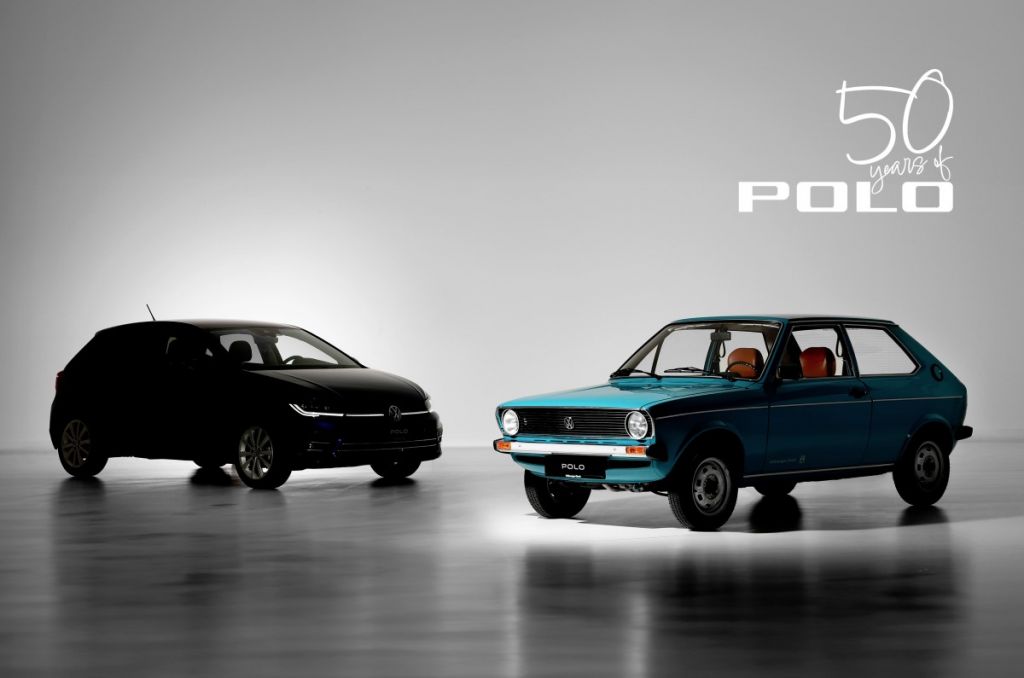
Come 2025, the Volkswagen Polo will celebrate 50 years of its existence. First revealed in 1975, the Polo has been through six generations in international markets, with over 2 crore units having been sold in that duration.
- VW Polo was one of three models to replace the Beetle
- Originally based on the Audi 50
- Only fifth-gen Volkswagen Polo was on sale in India
First-gen Volkswagen Polo (1975-1981)

The small hatchback was said to be one of three models up VW’s sleeve when it came time to replace the venerable Beetle in the 1970s, with the other two being the Passat (1973) and the Golf (1974). The front wheel drive hatchback was based on the Audi 50, and was meant to offer buyers an efficient (read: lightweight), practical and affordable model that also boasted of good handling characteristics.
Second-gen Volkswagen Polo (1981-1994)

The second-gen Polo is said to have brought a raft of improvements, including more space and comfort as well as newer engines. In 1987, the limited special series Polo Coupe GT G40 saw the debut of the scroll-type supercharger, which provided more power.
Third-gen Volkswagen Polo (1994-2001)

Another leap forward followed in the third generation, especially in terms of technology. At the time, the Polo was one of the first vehicles in its class with safety features such as airbags. In 1998, the Polo was available for the first time as a GTI.
Fourth-gen Volkswagen Polo (2001-2009)

The fourth-gen model increased in size, and is said to offer much more room on the inside. Safety kit also saw a major expansion with front and side airbags, power steering and ABS coming as standard in international markets.
Fifth-gen Volkswagen Polo (2009-2017)

Along with the introduction of a host of digital upgrades – from infotainment to driver assistance systems – the fifth-gen Polo also made a name for itself in motorsport. The VW Polo R won the Wold Rally Championship (WRC) title four times in a row from 2013. This is the version that was brought to India, but more on that below.
Sixth-gen Volkswagen Polo (2017-present)

The sixth generation of the hatchback was based on the modular transverse matrix (MQB) platform and is said to have set new standards terms of connectivity, safety and driving dynamics. An update in 2021 brought even more tech, with assistance and comfort systems said to be offered from more expensive models.
Volkswagen Polo India details

The Polo was the first locally manufactured model at the Volkswagen India’s Chakan plant in Pune. Following the start of production in 2009, the hatchback was first showcased on January 5 at the Auto Expo 2010, in New Delhi, though prices were announced on March 8. That the Polo was brought to India within a year of its international launch underscored its importance for our market.
At the time, the VW Polo differentiated itself from the likes of the Hyundai i20 and Maruti Swift by offering a tough build along with great ride and handling, thanks to beefy suspension. While the overall package was initially let down by a pair of weak 1.2-litre petrol and diesel engines (there was a slow-selling 1.6-litre petrol as well), the Polo was given the coveted GT badge and an excellent 1.2-litre turbo-petrol engine and even better 7-speed dual-clutch automatic gearbox in 2013, turning the heads of petrolheads in India at the time.

The Polo also made its mark in the Indian motorsport scene, from the Polo Cup race cars used on track to the rally-prepped models used in INRC stages. 2020 saw the removal of the diesel option and the 1.2 TSI engine option, though a new 1.0-litre turbo-petrol unit was introduced, which still does duty in the Virtus and Taigun. For a limited run, the Polo GTI was on sale in India, but its CBU status made it quite inaccessible to most.

Nonetheless, one of the Polo’s biggest drawbacks was the cramped rear seat, and as time went on, and rivals got upgraded, the VW started to feel its age. Production of the Polo stopped at the Chakan plant in 2022, and by then Volkswagen had retailed 2,96,505 units of the hatchback in the country. While the German brand had considered bringing the model back to India in GTI form, VW has decided to bring the larger Golf GTI instead. The Polo is unlikely to make its way back to our market.
Also see:
Buying used: (2013-2020) Volkswagen Polo GT TSI